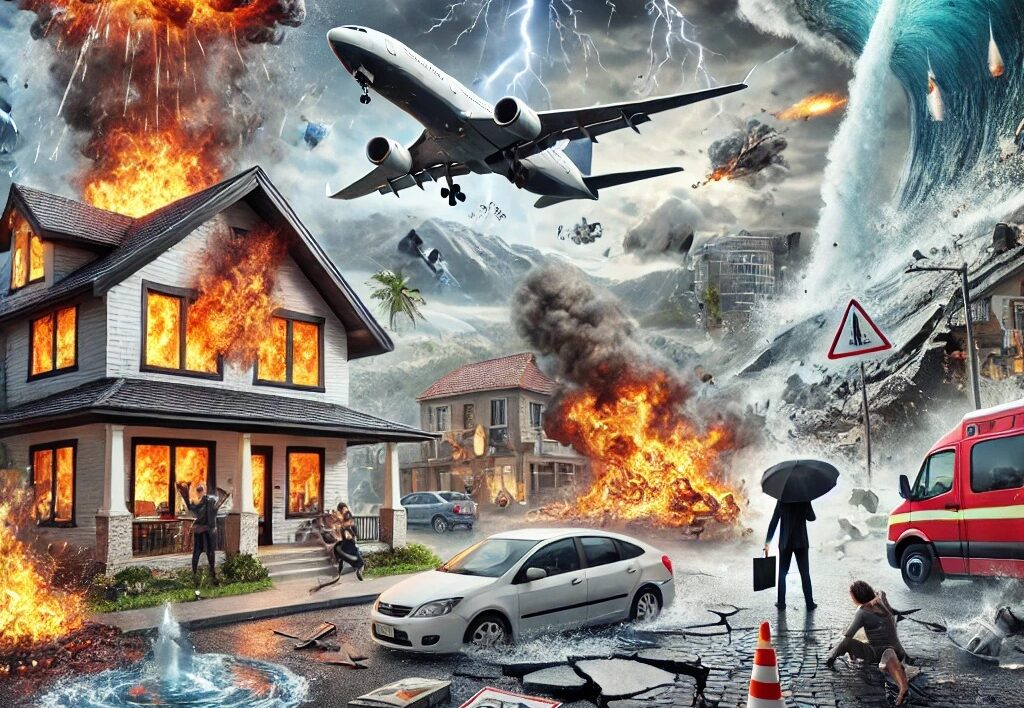Understanding the Basic Cause of Loss Form in Insurance

The Basic Cause of Loss Form, sometimes referred to as CP 10 10 or cp1010, is a key part of commercial property insurance, providing a clearly defined level of protection against specific causes of loss in insurance.
For insurance professionals and policyholders alike, understanding this named-peril policy is essential for effectively managing risk and ensuring suitable policy coverage. In this article, we examine the form’s purpose, main features, and place in the broader insurance framework, along with practical examples and recommendations.
Definition and Overview of the Basic Cause of Loss Form
The Basic Cause of Loss Form is a named-peril policy that covers losses stemming from specifically listed risks. Widely used in commercial property insurance, it sets out the covered causes of loss (or perils) under the policy. Unlike more comprehensive forms, such as the Broad Causes of Loss Form (CP 10 20) or the Special Causes of Loss Form (CP 10 30), the Basic Form restricts coverage to a defined list of perils, making it a cost-effective but narrower option. This focus helps insurers manage risk exposure and ensures policyholders know exactly which events activate coverage.
The Insurance Services Office (ISO) has long used this form to simplify both underwriting and claims. By clearly listing the covered causes of loss, the Basic Cause of Loss Form reduces ambiguity during claim evaluations and lowers the chance of disputes. In insurance terminology, the cause of a loss is referred to as a peril, and recognizing which of the following can be defined as a cause of a loss is vital when using this form.
Key Characteristics of the Basic Cause of Loss Form
- Named Perils Coverage: This coverage applies only to losses caused by perils explicitly named in the policy, often referred to as basic form coverage perils.
- Exclusions: Any risk not listed in the policy—such as floods or earthquakes—is not covered.
- Affordability: Because it covers fewer risks, this basic form insurance typically costs less than more extensive coverage options.
These attributes make the Form appealing for businesses with relatively low risk exposure or those needing targeted protection at a reasonable price
Key Components or Features
Defined List of Perils
The form specifies the events that trigger coverage. Below is a basic perils list outlining common insurance perils and their descriptions:
These specific causes of loss make the Basic Form a good option for businesses wanting focused protection without the higher cost of broader coverage.
| Peril | Description |
|---|---|
| Fire | Damage caused by fire incidents. |
| Lightning | Losses resulting from lightning strikes. |
| Explosion | Includes explosions from gases or fuels but excludes pressure-relief device failures. |
| Windstorm or Hail | Covers damage from high winds or hailstorms (excluding frost or cold weather). |
| Smoke | Damage caused by sudden and accidental smoke exposure. |
| Aircraft or Vehicles | Covers damage caused by aircraft or vehicle collisions with insured property. |
| Riot or Civil Commotion | Includes losses due to riots or public disturbances. |
| Vandalism | Damage from intentional destruction of property. |
| Sprinkler Leakage | Covers water damage from sprinkler systems. |
| Sinkhole Collapse | Protects against structural damage caused by sinkholes. |
| Volcanic Action | Includes damage from volcanic eruptions. |
- Specified Exclusions: Along with listing covered perils, the form spells out exclusions, clarifying which risks are not part of the policy. This helps avoid confusion during claims.
- Triggering Conditions: The document outlines what must occur for a loss to qualify, including any required documentation.
- Policy Limits and Sub-limits: It explains the maximum payout available for each cause of loss, as well as overall policy limits—key factors in risk management and underwriting.
- Standardized Language: Consistent wording throughout the form reduces ambiguity and promotes a uniform understanding across policies.
- Declarations: This section of the policy details information such as the insured party, policy period, and coverage limits.
- Limitations: The form describes any restrictions on coverage, such as time limits or specific conditions that must be met before a claim is valid.
Contextual Analysis: Comparing Causes of Loss Forms
Seeing how the Basic Cause of Loss Form compares to other forms helps clarify its role in the insurance landscape. The table below highlights the differences between the Basic, Broad, and Special causes of loss forms:
| Basic Form | Broad Form | Special Form | |
|---|---|---|---|
| Coverage Type | Named Perils | Named Perils plus additional risks | Open Perils (All Risks) |
| Examples of Covered Perils | Fire, Lightning, Vandalism, Explosion | Basic perils plus falling objects, water damage | All risks unless specifically excluded |
| Cost | Lower | Moderate | Higher |
| Scope | Limited | Broader | Comprehensive |
The Basic Causes of Loss Form works well for businesses with relatively low risk exposure or those looking for a cost-effective solution. By contrast, the Broad Causes of Loss Form and Special Causes of Loss Form cater to organizations that require broader coverage.
Practical Applications and Real-World Examples
Insurance professionals often see various situations where the Basic Cause of Loss Form applies:
- Commercial Property Policies: Imagine an office building that sustains fire damage. If the policy includes the Basic Cause of Loss Form, the claim hinges on whether the event aligns with one of the listed causes of loss. This clear guideline helps underwriters and claims adjusters make swift, accurate decisions.
- Small Businesses: A shop owner may choose the Basic Form to cover risks like fire and vandalism while excluding less likely events such as sinkhole collapse. This targeted approach can keep premiums more manageable.
- Seasonal Properties: Owners of properties used only part of the year might prefer Basic coverage for common risks without paying extra for rarely encountered perils.
- Budget-Conscious Policyholders: Companies operating on tight budgets can opt for the Basic Cause of Loss Form to secure vital protections while controlling costs.
Best Practices and Recommendations
Insurance professionals can benefit from these best practices when working with the Basic Cause of Loss Form:
- Understand Client Needs: Assess each client’s specific risks to see if the Basic Form offers enough protection. A careful review helps ensure the policy aligns with the business’s exposure.
- Review Policy Exclusions: Make certain clients fully understand which causes of loss are not included in coverage. Clear communication prevents disagreements during claims.
- Combine with Supplemental Policies: For broader protection, consider pairing the Basic Form with additional coverage, such as flood or earthquake policies. This ensures critical risks not covered by the Basic Form are still addressed.
- Ongoing Training: Regular training for underwriters and claims adjusters increases familiarity with the form’s language and specific basic coverage perils, encouraging consistent decisions.
- Maintain Detailed Documentation: Accurate record-keeping of claims and policy assessments is essential. Thorough documentation supports audits and helps resolve any coverage disputes.
Addressing Common Misconceptions
- “All Risks Are Covered”
Some clients believe the policy covers every possible loss. It’s important to clarify that only the perils specifically listed in the Basic Form are covered, unlike an all-risk policy. - Cost vs. Coverage
While the Basic Form is typically less expensive, its limited scope may leave certain events uncovered. Clients should weigh lower premiums against the possibility of gaps in coverage.
Conclusion
The Basic Cause of Loss Form is a central component of commercial property insurance because it delivers a clearly defined, cost-effective approach to risk management. By outlining the covered causes of loss and exclusions in standardized language, it reduces uncertainty during claims. Comparing it to broader forms highlights its usefulness for businesses with lower risk exposure or those needing targeted coverage.
A solid grasp of this form enables insurance professionals to advise clients effectively, handle claims efficiently, and maintain transparency throughout underwriting. Whether you manage a small business or a large commercial operation, the Basic Cause of Loss Form can serve as a reliable foundation for your property insurance strategy.
For more insight into how the fits into your risk management practices or to review your current coverage, please contact our team. We provide customized guidance and policy reviews to help you strike the right balance between cost and protection. Get in touch today to discuss how our expertise can support your insurance requirements, including explanations of insurance definitions, common policy conditions, and commercial property conditions that may impact your coverage. Understanding which of the following is the cause of loss in your particular case is crucial, and we’re here to help you navigate the complexities of causes of loss in insurance
Frequently asked questions
The Basic Cause of Loss Form (CP 10 10) is one of three main types of commercial property insurance forms that specify covered perils. It provides coverage for a specific list of named perils explicitly stated in the policy. They are: fire, lighting, explosion, smoke, windstorm or hail, riot or civil commotion, aircraft or vehicles, vandalism, sinkhole/collapse, volcanic action.
The Basic Form typically covers the following perils:
Fire, Lightning, Explosion, Windstorm or Hail, Smoke, Aircraft or Vehicles, Riot or Civil Commotion, Vandalism, Sprinkler Leakage, Sinkhole Collapse, Volcanic Action
If a loss results from a peril that isn’t specifically named in the policy, the damage won’t be covered.
The Basic Form may be suitable for businesses with lower risk profiles or those seeking more affordable coverage options. However, it’s essential to carefully assess your specific needs and risk exposures when selecting a form.
The Basic Form divides perils into two groups:
- Group I: Fire, Lightning, Explosion, Vandalism, Sprinkler Leakage
- Group II: Windstorm or Hail, Smoke, Aircraft or Vehicles, Riot and Civil Commotion, Sinkhole Collapse, Volcanic Action
The Basic Form is a named perils form, meaning it only covers the specific perils listed in the policy. In contrast, open perils (or “all risks”) coverage, like the Special Form, covers all perils except those explicitly excluded
